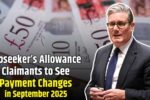US Student Loan Forgiveness 2025: The Trump administration has surprised many by approving a targeted $10,000 student loan forgiveness program for 2025. This unexpected move represents a shift from the administration’s previous stance on widespread debt relief, focusing instead on helping specific groups of borrowers facing severe financial hardship.
After extensive negotiations with Congress and input from economic advisors, the program aims to provide strategic debt relief while maintaining fiscal responsibility. This measured approach differs significantly from broader forgiveness proposals seen in recent years.
What’s New in the 2025 Student Loan Relief Program
The approved debt cancellation initiative takes a conservative approach to student debt relief. Rather than blanket forgiveness, this program specifically targets borrowers who demonstrate genuine financial need and have made good-faith efforts to repay their loans.
The $10,000 relief amount applies per borrower across all qualifying federal loans. This means individuals with multiple federal student loans can receive up to $10,000 in total debt reduction, providing meaningful relief without creating excessive government expenditure.
Who Qualifies for the $10,000 Debt Cancellation
Income Requirements
The program maintains strict income eligibility to ensure relief reaches those most in need. Individual filers must earn less than $75,000 annually, while married couples filing jointly cannot exceed $150,000 in combined income.
These lower thresholds reflect the administration’s commitment to targeting middle and lower-income families while controlling program costs.
Loan Types Covered
Forgiveness applies exclusively to federal student loans, including:
- Direct Subsidized and Unsubsidized Loans
- Federal Family Education Loan (FFEL) Program loans held by the Department of Education
- Federal Perkins Loans
- Graduate PLUS loans (Parent PLUS loans excluded)
Private student loans remain ineligible, and the program excludes Parent PLUS loans to focus relief on individual borrowers rather than family debt.
Additional Eligibility Criteria
Borrowers must demonstrate they received Pell Grants during undergraduate studies, confirming their financial need during college. Additionally, applicants must have made at least 24 consecutive monthly payments on their federal loans, showing commitment to repayment efforts.
How the Application Process Works
Unlike previous automatic systems, this program requires all borrowers to submit applications through a dedicated government portal. The Department of Education emphasizes this approach ensures proper verification and prevents fraudulent claims.
The application process includes income verification, loan documentation, and confirmation of payment history. Processing typically takes 60-90 days from submission.
Timeline for Debt Relief
The program launches in spring 2025, with applications accepted on a rolling basis throughout the year. The administration has allocated funding for the first 500,000 qualified applicants, emphasizing the importance of early application submission.
Borrowers will receive email notifications once their applications are approved, with debt relief applied directly to their loan accounts within 30 days of approval.
What This Means for Your Financial Future
This targeted relief can substantially reduce monthly payment obligations for qualifying borrowers. Many recipients may eliminate their federal student loan debt entirely, while others will see significant reductions in their remaining balances.
Financial advisors recommend continuing regular loan payments until receiving official debt cancellation confirmation. This maintains good standing and prevents potential complications during the application review process.
The Trump administration’s approval of limited student loan forgiveness represents a pragmatic approach to addressing educational debt challenges. While more restrictive than previous proposals, this program provides meaningful assistance to borrowers demonstrating both financial need and repayment responsibility.
















